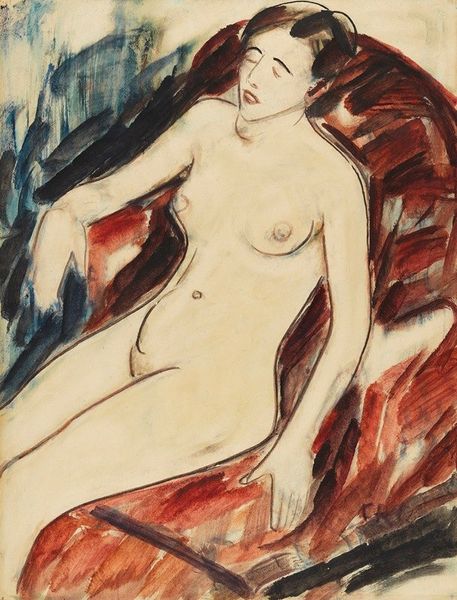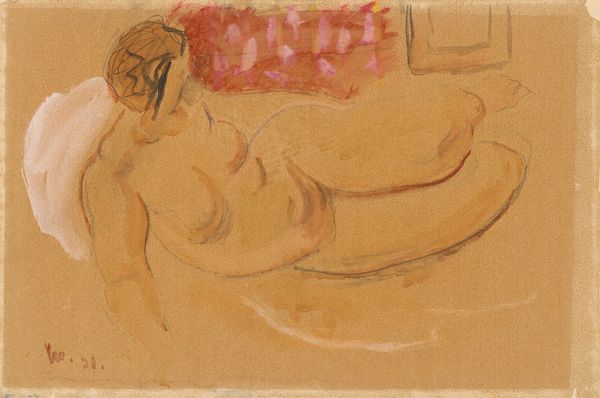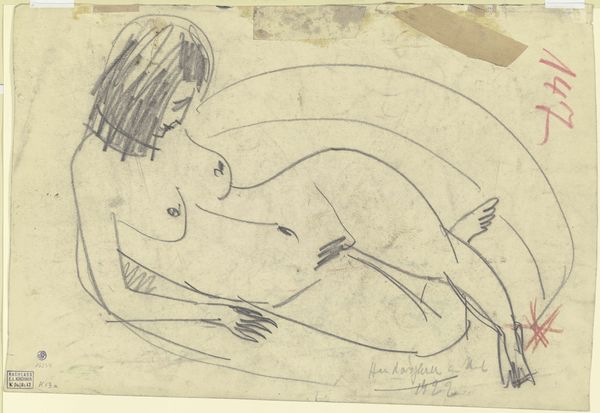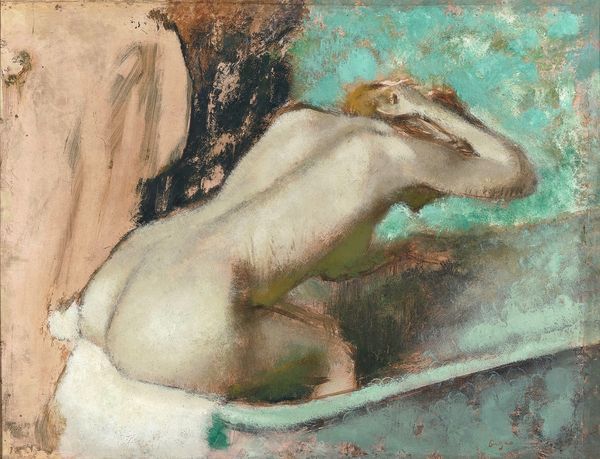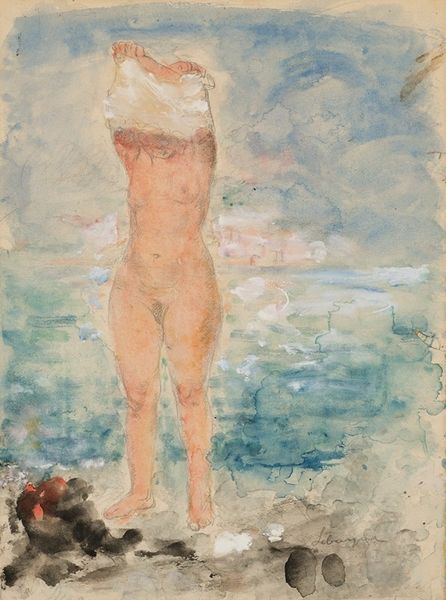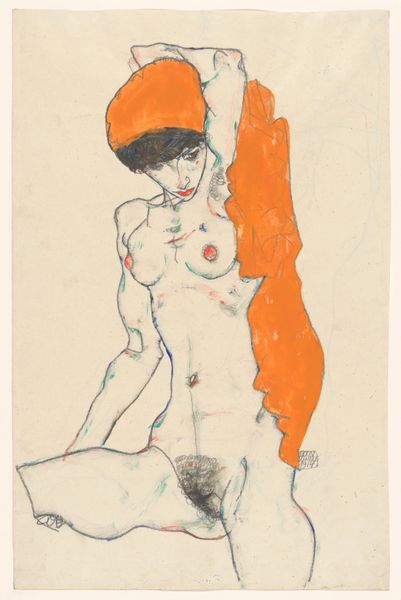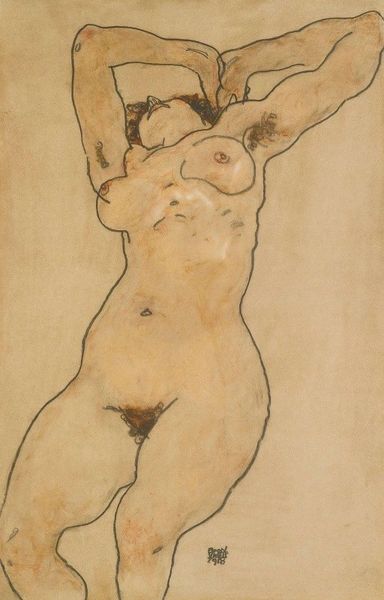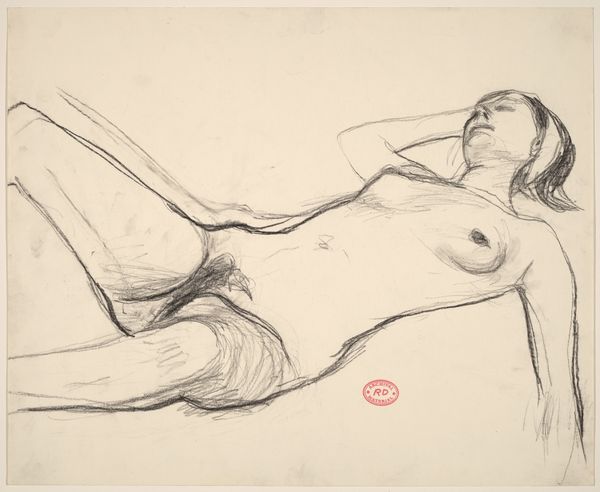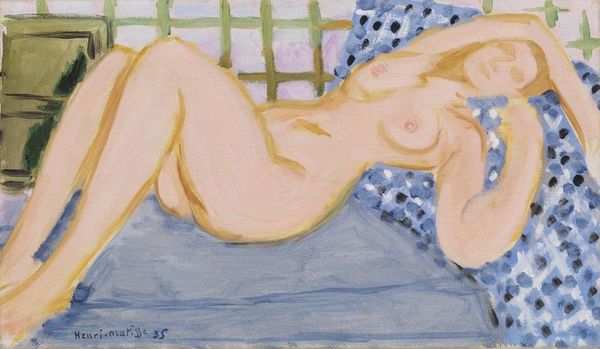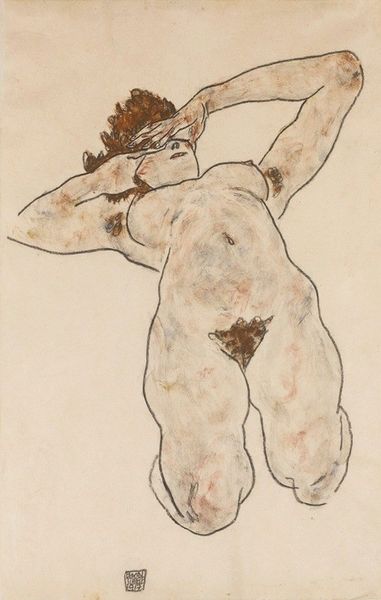
Nu féminin et sultan pour le projet d’illustration de l’ouvrage Les Mille et Une Nuits 1966
0:00
0:00
watercolor
#
abstract painting
#
figuration
#
oil painting
#
watercolor
#
watercolour illustration
#
nude
#
surrealism
#
realism
Copyright: Modern Artists: Artvee
Editor: This watercolor illustration, "Nu féminin et sultan pour le projet d’illustration de l’ouvrage Les Mille et Une Nuits," created by Salvador Dalí in 1966, strikes me as quite provocative. What's your interpretation? Curator: This piece presents a complex dialogue around Orientalism, power, and gender. Dalí, a surrealist exploring the unconscious, taps into the Western fascination with the "exotic" East. But how do we critically examine this through a contemporary lens? The depiction of the nude woman, coupled with the distant Sultan, perpetuates a dynamic of voyeurism and dominance. How do we reconcile Dalí’s artistic exploration with its potentially problematic implications? Editor: That's interesting. I was focusing more on the surreal aspects and the technique, but I see your point. Does the context of illustrating "One Thousand and One Nights" somehow excuse or complicate the portrayal? Curator: The context certainly complicates it. "One Thousand and One Nights" itself is a text steeped in complex representations of gender and power. Dalí's illustrations, while visually striking, layer another interpretation onto already existing Orientalist narratives. We need to question how the artist engages with and possibly reinforces those narratives through his own visual language. Is he merely illustrating, or is he also adding his own perspective, and what does that perspective reveal about the cultural biases of the time? Editor: So, it's not just about the artistic merit, but also about understanding the social and historical implications. It provides such a valuable framework to critically assess this piece. Curator: Precisely. Art doesn't exist in a vacuum; it's a product of its time, reflecting and sometimes reinforcing prevailing ideologies. By examining the cultural context, we gain a deeper understanding of the artwork's multifaceted layers of meaning and its potential impact.
Comments
No comments
Be the first to comment and join the conversation on the ultimate creative platform.

